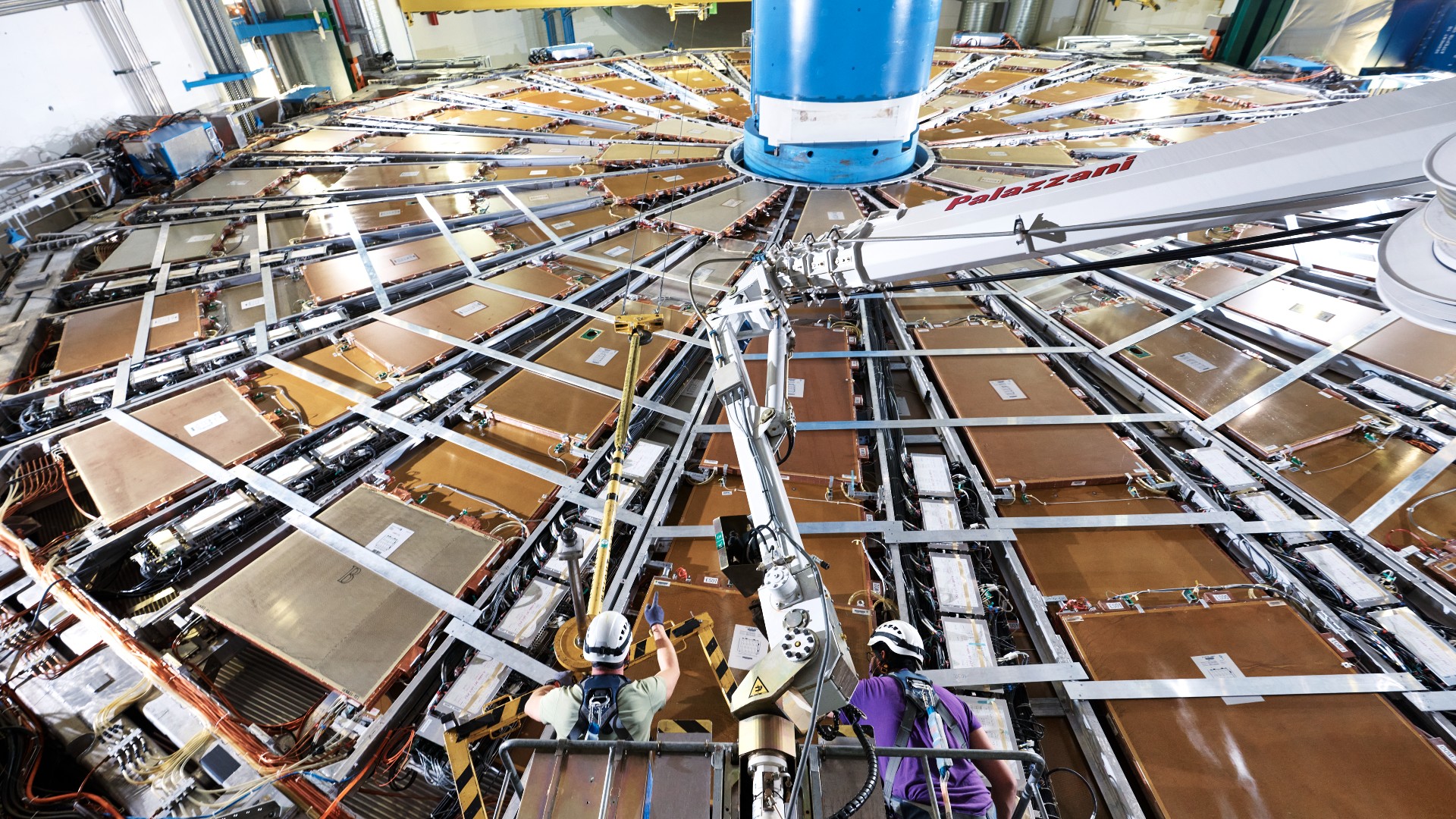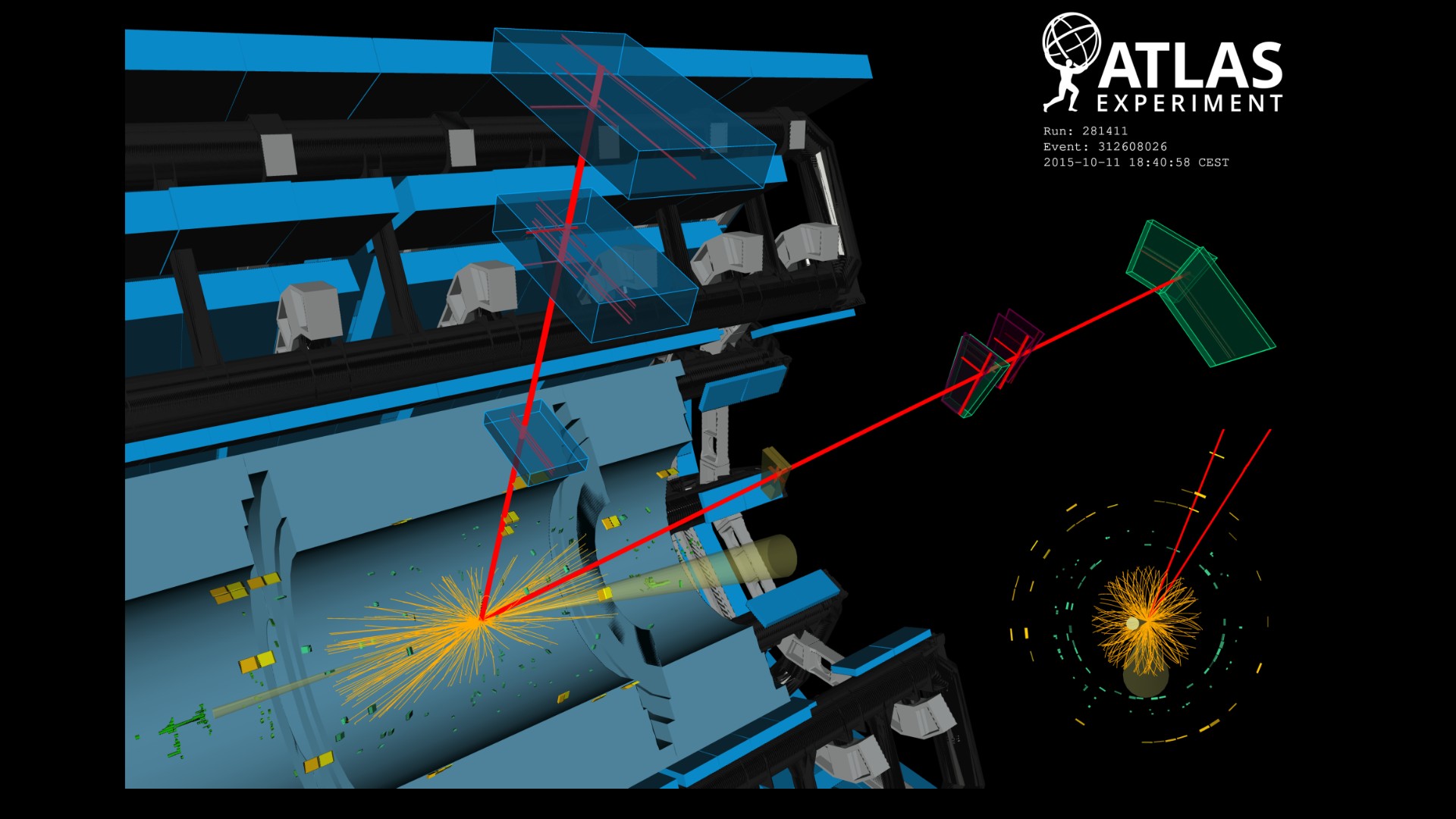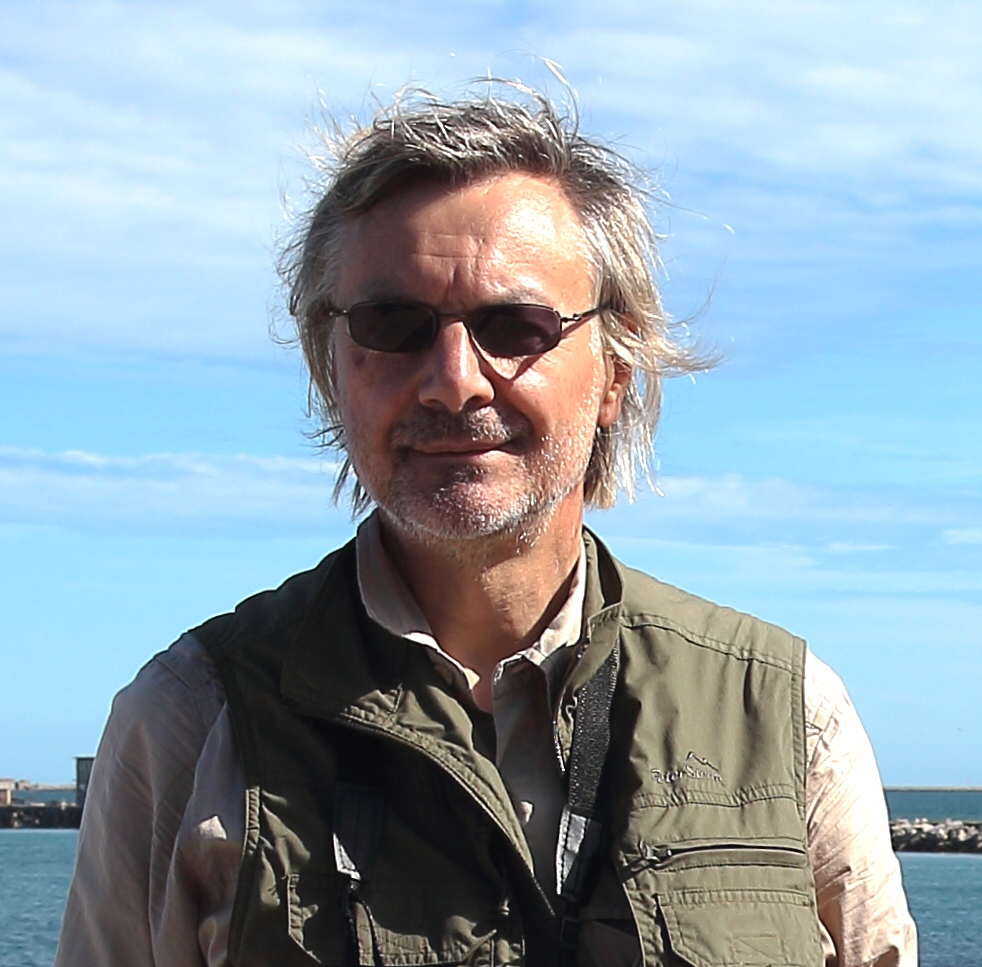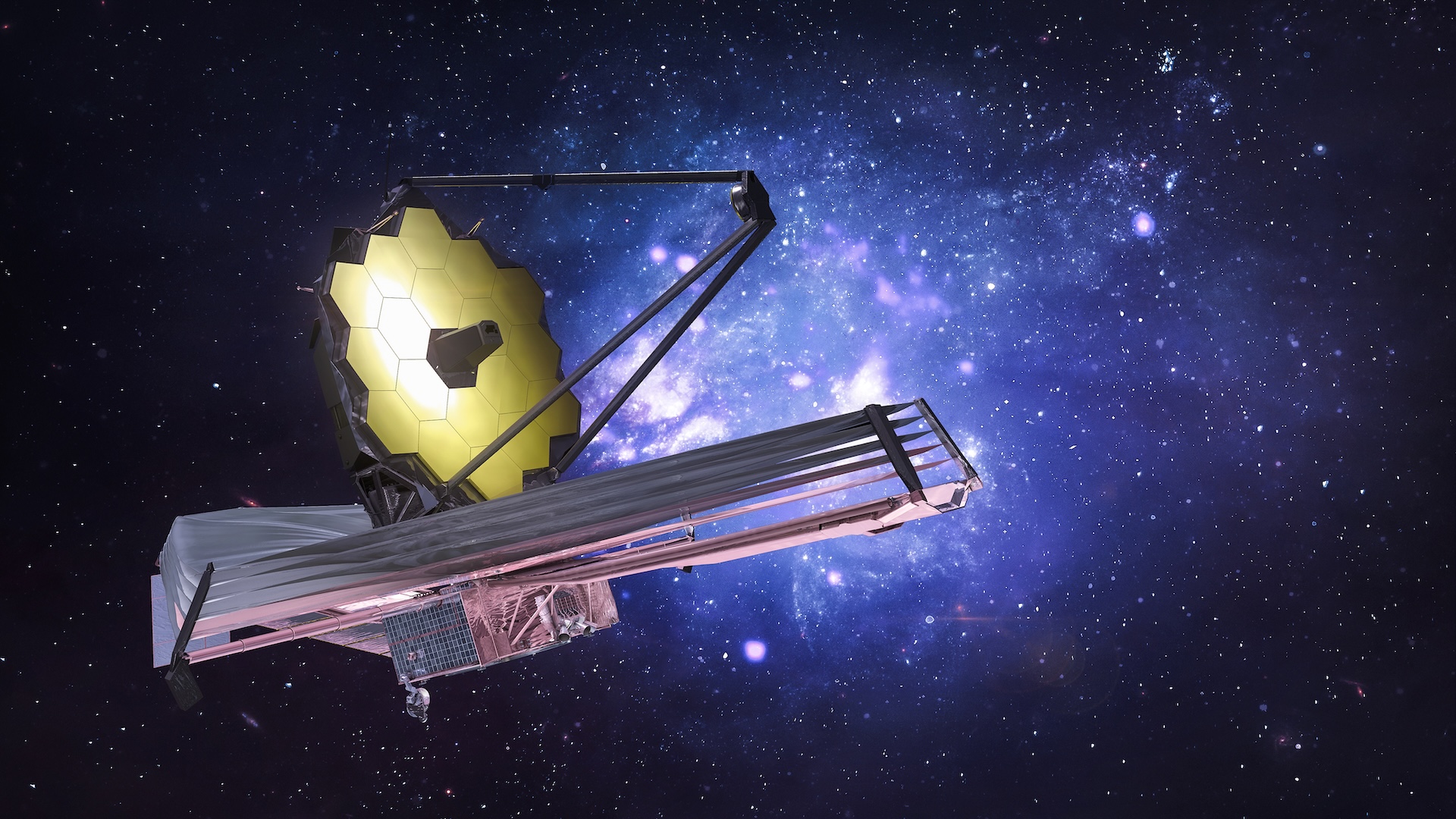What is the ATLAS experiment?
Deep inside the Large Hadron Collider, ATLAS is the world's largest particle detector.

The ATLAS experiment is the largest particle detector at the Large Hadron Collider (LHC), the world's largest atom smasher. The ATLAS experiment (short for "A Toroidal LHC Apparatus") detects the tiny subatomic particles created after beams of particles smash into each other at near light speed at the LHC, which is operated by the European Organization for Nuclear Research (CERN). Most famously, physicists at the LHC discovered the Higgs boson in 2012, thanks, in large part, to results from the ATLAS experiment.
The ATLAS particle detector
Beams of particles at the LHC whirl around a 17-mile-long (27 kilometers) underground ring near Geneva, before smashing into each other. The collisions create particles that fly out in all directions, and it's the task of a particle detector — a mass of high-tech equipment surrounding the collision point — to capture as much information as possible about them, according to CERN.
Particles would normally travel in straight lines, but if they have a non-zero electric charge, their paths can be made to curve by applying a strong magnetic field. In the case of ATLAS, this is achieved using a series of enormously powerful, doughnut-shaped electromagnets called toroids. These toroids give ATLAS its name, according to ATLAS Open Data. The amount of curvature depends on the momentum of a particle, so it's possible to calculate this by tracking the exact trajectory of a particle.
This is done by ATLAS’s inner detector, which according to CERN is made up of three layers. First, just 1.3 inches (3.3 centimeters) from the central beam, is an array of almost 100 million silicon pixels, each smaller than a grain of sand, to detect charged particles as they shoot out from the collision point. Surrounding the pixel detector is a semiconductor tracker made up of millions of “micro-strips” of sensors, which provides further tracking of the emitted particles. Finally, a transition radiation tracker made of 300,000 gas-filled tubes, each 0.17 inches (4 millimeters) in diameter, is used to both detect and identify charged particles as they ionize the gas.
The inner detector is surrounded by an array of calorimeters, devices that stop and absorb particles to measure their energy. Finally, the outermost part of the system consists of a three-layer, high-precision spectrometer aimed at detecting one particularly elusive type of particle called a muon.
The ATLAS experiment at the Large Hadron Collider

With a length of 151 feet (46 meters), a diameter of 82 feet (25 m) and a weight of 7,700 tons (7,000 metric tons), ATLAS is the largest collider detector ever constructed, according to the U.K. Science and Technology Facilities Council. It sits in an underground cavern 328 feet (100 m) below the surface, close to the village of Meyrin in Switzerland. Its most distinctive feature, its enormous magnet system, takes the form of eight superconducting toroids, each 82 feet (25m) in length.
The particle collisions taking place in the heart of the detector do so at a rate of around a billion per second, according to the ATLAS experiment website. Data from these collisions are recorded using over 100 million electronic channels, before being analyzed by teams of scientists scattered all over the world. With over 5,500 members, the ATLAS community is one of the largest scientific collaborations in history.
Get the world’s most fascinating discoveries delivered straight to your inbox.
ATLAS experiment results
ATLAS is one of two general-purpose detectors at the LHC, along with the Compact Muon Solenoid (CMS) experiment, according to CERN. Although the two detectors differ in their technical approach and magnet design, they have the same basic scientific goals. According to the ATLAS team at University College London, these include addressing some of the biggest unanswered questions that scientists have about the universe, such as the exact nature of dark matter, why matter is so much more plentiful than antimatter, and whether space has other, undiscovered dimensions.
ATLAS' greatest moment to date was undoubtedly the discovery of the Higgs boson. This particle had been predicted to exist way back in the 1960s but, due to its large mass and fleeting existence, had never been observed with previous generations of particle detectors. However, the long search finally ended in 2012, when both ATLAS and CMS detected the Higgs particle with a significance of "5 sigma," meaning there was less than a 1-in-a-million chance the detection was caused by random fluctuations. The announcement, on July 4, 2012, was so highly anticipated that only people who had lined up the night before were able to get into the room on the day of the announcement, according to CERN.
In the time since the Higgs discovery, ATLAS has been busy. In June 2021, the ATLAS collaboration submitted its 1,000th scientific paper for publication, according to CERN. That's a truly astonishing amount of cutting-edge research to come out of a single facility in the course of 10 years. But its work isn't finished yet, because scientists are still searching for the next big discovery beyond the Higgs boson.
For a long time, it was believed this might involve a whole family of theoretically predicted "supersymmetric" particles. But a 2021 study by ATLAS researchers found nothing of the kind, Live Science previously reported. That's bad news for the theoreticians but not necessarily for the rest of us, because it means the breakthrough, when it finally comes, may be something totally unexpected.

Additional resources
- Explore the ATLAS experiment's own website.
- See inside the world of ATLAS scientist Clara Nellist on her YouTube channel.
- View hundreds of ATLAS images on CERN's document server.
Bibliography
Anthony, K. (2021, June 18). ATLAS celebrates results of 1000 collision papers. ATLAS Experiment, CERN. https://atlas-public.web.cern.ch/updates/news/1000-collision-papers
ATLAS Experiment. (n.d.). The ATLAS Experiment. CERN. Retrieved March 16, 2022, from https://atlas.cern/about
ATLAS Open Data. (n.d.). ATLAS detector at the LHC. Retrieved March 16, 2022, from http://opendata.atlas.cern/release/2020/documentation/atlas/experiment.html
CERN. (n.d.). ATLAS. Retrieved March 16, 2022, from https://home.web.cern.ch/science/experiments/atlas
CERN. (n.d.). How a detector works. Retrieved March 16, 2022, from https://home.web.cern.ch/science/experiments/how-detector-works
Gray, H., & Mansoulié, B. (2018, July 4). The Higgs boson: the hunt, the discovery, the study and some future perspectives. ATLAS Experiment, CERN. https://atlas-public.web.cern.ch/updates/feature/higgs-boson
Science and Technology Facilities Council. (2016, March 3). ATLAS. U.K. Research and Innovation. https://stfc.ukri.org/research/particle-physics-and-particle-astrophysics/large-hadron-collider/atlas/
University College London. (n.d.). ATLAS@UCL. Retrieved March 16, 2022, from https://www.hep.ucl.ac.uk/atlas/

Andrew May holds a Ph.D. in astrophysics from Manchester University, U.K. For 30 years, he worked in the academic, government and private sectors, before becoming a science writer where he has written for Fortean Times, How It Works, All About Space, BBC Science Focus, among others. He has also written a selection of books including Cosmic Impact and Astrobiology: The Search for Life Elsewhere in the Universe, published by Icon Books.


